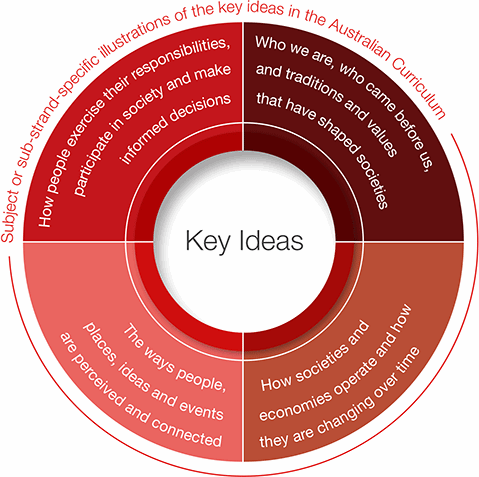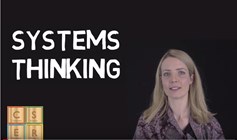Australian Curriculum v7.2, Foundation Year Science Australian Curriculum. − Recall ideas using collage, clay, play dough, digital photo story, drawing and/or. The Victorian Curriculum and Assessment Authority (VCAA) are responsible for the decision to implement the Australian Curriculum, whilst reserving the right to retain their own state's priorities and approaches when it comes to curriculum provision and teaching and learning. Firstly, this unit was guided and informed by cross-curriculum priorities specified in the Australian National Curriculum. These priorities, two of which include Asia and Australia’s engagement with Asia and Sustainability, are strongly future-focused and encompass all learning areas and disciplines within the national curriculum (ACARA, 2014a). Australian Curriculum, Assessment and Reporting Authority (ACARA) Level 13, Tower B, Centennial Plaza, 280 Elizabeth Street, Sydney, NSW 2000 Phone: 1300 895.
- Australian Curriculum V7.2 Updateeffective Curriculum Ideas Free
- Australian Curriculum V7.2 Updateeffective Curriculum Ideas 2020
- Australian Curriculum V7.2 Updateeffective Curriculum Ideas Examples
Dear Ms Doe,

Thank you for your letter outlining your reservations regarding our Education for Sustainability (EfS) unit. I appreciate the interest you show in your child’s education and would like to take this opportunity to address your concerns by providing you with information regarding intended learning outcomes and educational aims associated with this unit. I would also like to reassure you that this unit arose not from my own views but rather, from learning objectives embedded within the national curriculum and the desire of the students themselves as they seek to better understand the cause and effect of deforestation in neighboring countries.
Firstly, this unit was guided and informed by cross-curriculum priorities specified in the Australian National Curriculum. These priorities, two of which include Asia and Australia’s engagement with Asia and Sustainability, are strongly future-focused and encompass all learning areas and disciplines within the national curriculum (ACARA, 2014a). Sustainability education is also particularly suited to themes investigated in Humanities and Social Sciences (Reynolds, 2014), being identified as one of seven main geographical concepts, and aligning closely with history and civics and citizenship educational aims (ACARA, 2014b). It is within this context that our year six unit of work on the South-east Asian rainforests was first conceived.
As a teacher, a main priority is to ensure that my students have the skills and understandings required to become active and informed global citizens. I feel strongly about involving students in their own education and my teaching and learning practices encourage students to think, feel, critique, investigate and reflect. Students are encouraged to explore matters they feel have significance or relevance to themselves and their futures and, as such, a detailed discussion was held with students volunteering topics of interest. A consensus was reached and our topic on Southeast Asian rainforests selected. Holden and Hicks (2007) indicate that many students are concerned about global issues, such as poverty and environment, and the ways in which these issues may affect their futures and want to learn more about the cause and effect of such matters.

Following principles outlined by the Australian Research Institute for Environment and Sustainability (ARIES), students are examining the connections between social, economic and cultural environments. They are investigating the management of these forests, loss of habitat and impacts on native animals (particularly Oran-tangs). They are researching the intended use and final destination of products and their consumers and this has led to their awareness of the many brands and products we use here in Australia that contribute to deforestation. Learning activities have been designed to provide information on ‘how’ to learn rather than ‘what to learn’ and I have provided a collaborative classroom environment in which to investigate these maters safely. Evans (2006) suggests this type of classroom environment can nurture student involvement and can facilitate a deeper understanding of underpinning knowledge and skills associated with Humanities studies.
So far, I have been amazed at the depth of feeling and maturity displayed by my students during this investigation. The empathy your child has shown towards both animals and poverty affected workers has allowed her to understand and appreciate the different perspectives involved in this issue and her determination in finding possible solutions has contributed greatly towards her decision to raise public awareness of this topic. While I may have provided the materials students need to critically examine and research this issue, the learning they have undertaken so far has empowered them and given them ownership of this issue.
I would love for you to arrange a time to visit our classroom and view our displays and presentations. Hopefully, I have addressed any concerns you may have relating to personal bias or beliefs I hold about this subject. Please, do not hesitate to contact me if you have any further enquiries.
Kind Regards
Corinna Leaman – Grade 6 Teacher
References
Australian Curriculum, Assessment and Reporting Authority [ACARA] (2014a). The Australian curriculum (v. 7.2): Cross-curriculum priorities. Retrieved from
Australian Curriculum, Assessment and Reporting Authority [ACARA] (2014b). The Australian curriculum (v. 7.2). Retrieved from:
Evans, M. (2006). Education for citizenship: What teachers say and what teachers do. Canadian Journal of Education, 29, 410-435. Retrieved from:
Holden, C., & Hicks, D. (2007). Making global connections: The knowledge, understanding and motivation of trainee teachers. Teaching and Teacher Education, 23, 13-23. doi: 10.1016/j.tate.2006.04.031
Reynolds, R. (2012). Teaching history, geography and sose in the primary school (2nd ed.). South Melbourne, VIC: Oxford University Press.
Drake, (2004), states that integrating the curriculum has been identified as beneficial for students as it assists with their ability to make connections and further their understanding. This demonstrates the benefit of teachers embracing curriculum integration.
A demonstration of how this can occur has been created using the text “Rules of Summer” by Shaun Tan.
A full reading of the text is completed at the beginning of the class. Students are then advised that in pairs they are required to create a drama demonstrating a rule or law within the school or community and how it effects people if that rule or law is obeyed or disobeyed. Another read through of the book will occur, to further understand the text once this task has been discussed. Students then develop their performance and present it to the class. The audience will be identifying whether the rule is obeyed or not within the performance, this assists with students being able to make meaningful connections with the performance (Moore, 2002).


Guiding questions will include; “What was it that you saw that made you come to that conclusion?”, “What would need to happen to alter the outcome?”, “How do you think this would effect members of the community?”, “Why do we need rules and laws in our community?”. Student will be exploring the concept of fairness and what that looks and feels like through their role play and as a member of the audience, identifying why different rules and laws are important for our society (Killen, 2009).
This leads to a reflective literacy task. Students can use images from the text which will be displayed around the room or one of the performances they viewed to write what has happened from the point of view of the character they have chosen. This task will be scaffold with a pro forma requiring the students to identify the character, setting and situation that they have chosen before beginning the writing task. The students will be assessed formatively during the task on their team work skills and being able to identify the rule being demonstrated in others performance, this focuses the students attention on the important aspects they are considering (Earl, 2003). Summative assessment will be used to assess the quality of exploration of the topic in their reflective writing piece which will be marked to a rubric.
Australian Curriculum links;
Laws and citizens
“How and why people make rules(ACHCK002)”

(Australian Curriculum and Assessment Reporting Authority [ACARA] (a), 2015.)
Literacy
Australian Curriculum V7.2 Updateeffective Curriculum Ideas Free
Texts in context
“Identify the point of view in a text and suggest alternative points of view(ACELY1675)”
(ACARA (b), 2015)
Drama
Australian Curriculum V7.2 Updateeffective Curriculum Ideas 2020
“Explore ideas and narrative structures through roles and situations and use empathy in their own improvisations and devised drama (ACADRM031)”
(ACARA (c), 2015)
Critical and creative thinking – “evaluate knowledge, clarify concepts and ideas, seek possibilities, consider alternatives.”
(ACARA (d), 2015)
Personal and social capability – “making responsible decisions, working effectively in teams and handling challenging situations constructively.”
(ACARA (e), 2015)
Ethical Understanding – “apply the skills of reasoning, empathy and imagination, consider and make judgments about actions and motives, and speculate on how life experiences affect and influence people’s decision making and whether various positions held are reasonable.”
(ACARA, (f), 2015)
References
Australian Curriculum and Assessment Reporting Authority. (a) (2015). The Australian Curriculum: Humanities and social sciences: Civics and citizenship. Retrieved from http://www.australiancurriculum.edu.au/humanities-and-social-sciences/civics-and-citizenship/curriculum/f-10
Australian Curriculum and Assessment Reporting Authority. (b) (2015). The Australian Curriculum: English. Retrieved from http://www.australiancurriculum.edu.au/english/curriculum/f-10?layout=1#level3
Australian Curriculum and Assessment Reporting Authority. (c) (2015). The Australian Curriculum: The Arts: Drama. Retrieved from http://www.australiancurriculum.edu.au/the-arts/drama/curriculum/f-10?layout=1#level3-4
Australian Curriculum and Assessment Reporting Authority. (d) (2015). The Australian Curriculum: General capabilities: Critical and creative thinking. Retrieved from http://www.australiancurriculum.edu.au/generalcapabilities/critical-and-creative-thinking/introduction/introduction
Australian Curriculum and Assessment Reporting Authority. (e) (2015). The Australian Curriculum: General capabilities: Personal and social capability. Retrieved from http://www.australiancurriculum.edu.au/generalcapabilities/personal-and-social-capability/introduction/introduction
Australian Curriculum and Assessment Reporting Authority. (f) (2015). The Australian Curriculum: General capabilities: Ethical understanding. Retrieved from http://www.australiancurriculum.edu.au/generalcapabilities/ethical-understanding/introduction/introduction
Australian Curriculum V7.2 Updateeffective Curriculum Ideas Examples
Drake, S & Burns R. (2004). Meeting standards through integrated curriculum. VA, USA : ASCD
Earl, L. (2003). Assessment as learning: using classroom assessment to maximise student learning. London, UK: Corwin press.
Killen, R. (2009). Effective teaching strategies:Lessons from research and practice.(5thed). South Melbourne, VIC:Cengage
Moore, T. (2002). The importance of narrative to drama education in primary school. Applied theatre researcher v6. Retrieved from http://cms-dev.itc.griffith.edu.au/__data/assets/pdf_file/0006/54969/importance-narrative.pdf
